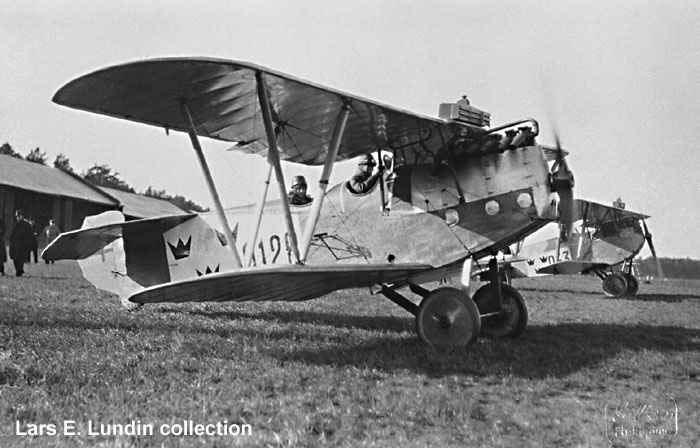|
|
||
| Phönix C.1 Dront (Reconnaissance Aircraft, 1919-1935) | ||
|
|
Page 1 (of 3) |
|
|
|
||
 |
||
|
In
the spring of 1919, two clever Austrian aviators, Edmund Sparmann and Max
Perini, were invited to come to Sweden with an aeroplane each and show
their abilities in aerobatics. Behind
the invitation stood the newspaper Dagens Nyheter and the Swedish
Aeronautical Society. Sparmann was First Pilot and designer at Phönix
Fleugzeugwerke in Wien. He was later to have a career an aircraft designer
in Sweden. Perini was a pilot with great experience from WWI.
One
of the aircraft was a single-seat fighter type Phönix D.III, later
purchased by the Army but also copied and built in Sweden by FVM. The other was a
two-seat reconnaissance aircraft, Phönix C.I.
The
two pilots gave an show which highly impressed the present senior officers
from the Army. Both pilots demonstrated loopings, rolls and spin. The
faster D.III made attacks against the slower C.1. The audience was really
showed the state of modern military aviation.
The
two Austrian aviatiors made a new show at Malmen. It stood clear that
these two aircraft were better than any of the types used by the Army
Aviation Company. On of the major problems was the lack of a good
reconnaissance aircraft. Captain Ernst Fogman, since 1917 chief of the
Army Aviation Company, soon arranged that the C.1 could be license-built
in Sweden. The aircraft was regarded as ugly; therefore it was nick-named
”Dronten” (the Dront), a name that more or less became official.
The
original C.1 was measured and construction drawings were made out. Engines
of Benz make, although not strong (220 hp) and also heavier than the
original ( 240 hp Hiero) were bought.
Three
batches of ten aircraft each were ordered from FMV at Malmen. (1920, 1921
and 1923). The ”Dront” was given the designation ”E 1 (E =
Escort)”.
In
1924, FVM bought about 30 engines of type Hispano-Suiza of 300 hp for the
planned own design J 24. When J 24 was cancelled, a test was made with
fitting of one of these engines at a ”Dront”. It was a success. This
new variation was usually called ”the Hispano-Dront” and was given the
designation E 2. Ten new aircraft were built by FMV. Photo at top: Dront # 0128 (220 hp Benz engine) with a Phönix D.III fighter in the background. Photo below: Model by Mikael Carlson, displayed at the Flygvapenmuseum (Swedish Air Force Museum) at Malmen/Malmslätt in Linköping. Series 121: Length: 7,51 m. Span:11,0 m. Maximum take-off weight: 1.340 kg. Max. speed:154 km/h.
|
||
 |
||
|
|
||
|
|
||
|
|
||
|
© Lars Henriksson |
Updated 2010-07-12 |
|
|
|
||